Air Conditioner Symbol in Car: Explanations!
When first encountering the air conditioner symbol in a car, many drivers may feel like they’ve stumbled upon an enigmatic code.
The symbol, often marked with “AC” or a snowflake icon, controls the vehicle’s climate system, but its functions may seem perplexing at first glance. Understanding this symbol involves grasping the various settings and modes associated with it.
From adjusting the temperature and fan speed to toggling between recirculation and fresh air modes, the air conditioner symbol plays a crucial role in keeping the car’s interior comfortable.
This introduction aims to shed light on the significance of this symbol and the ways it contributes to a pleasant driving experience.
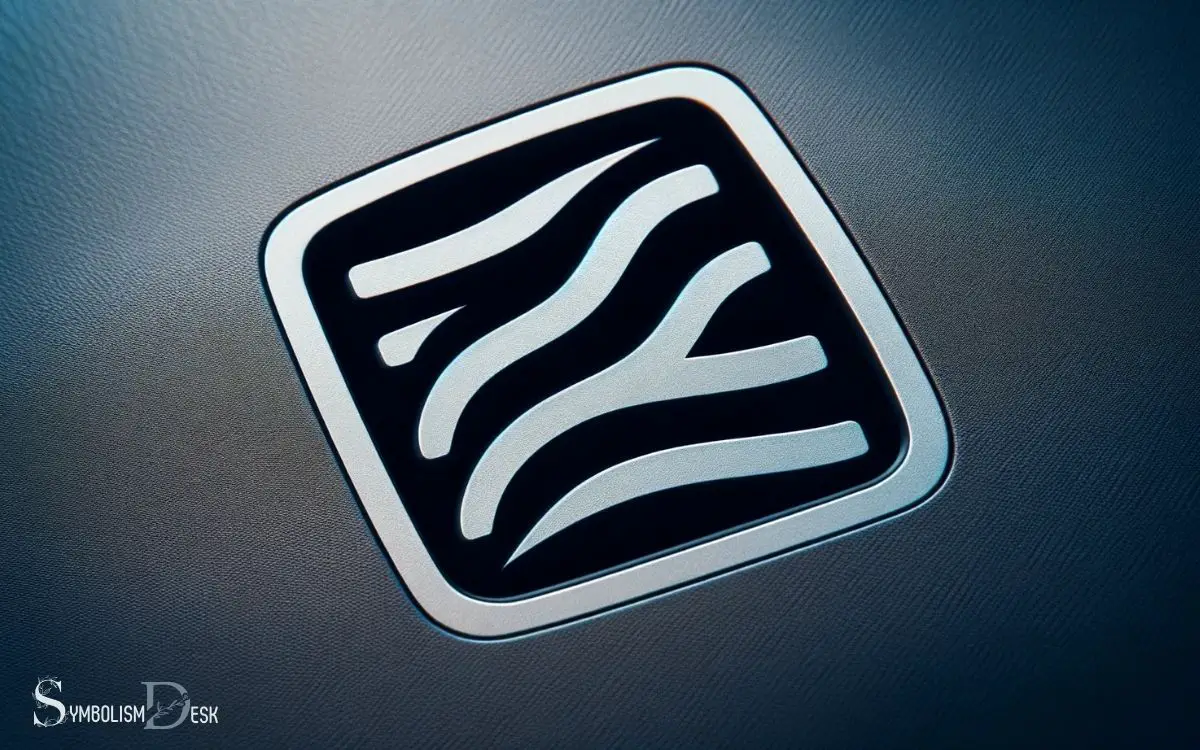
Key Takeaway
Understanding the Air Conditioner Symbol
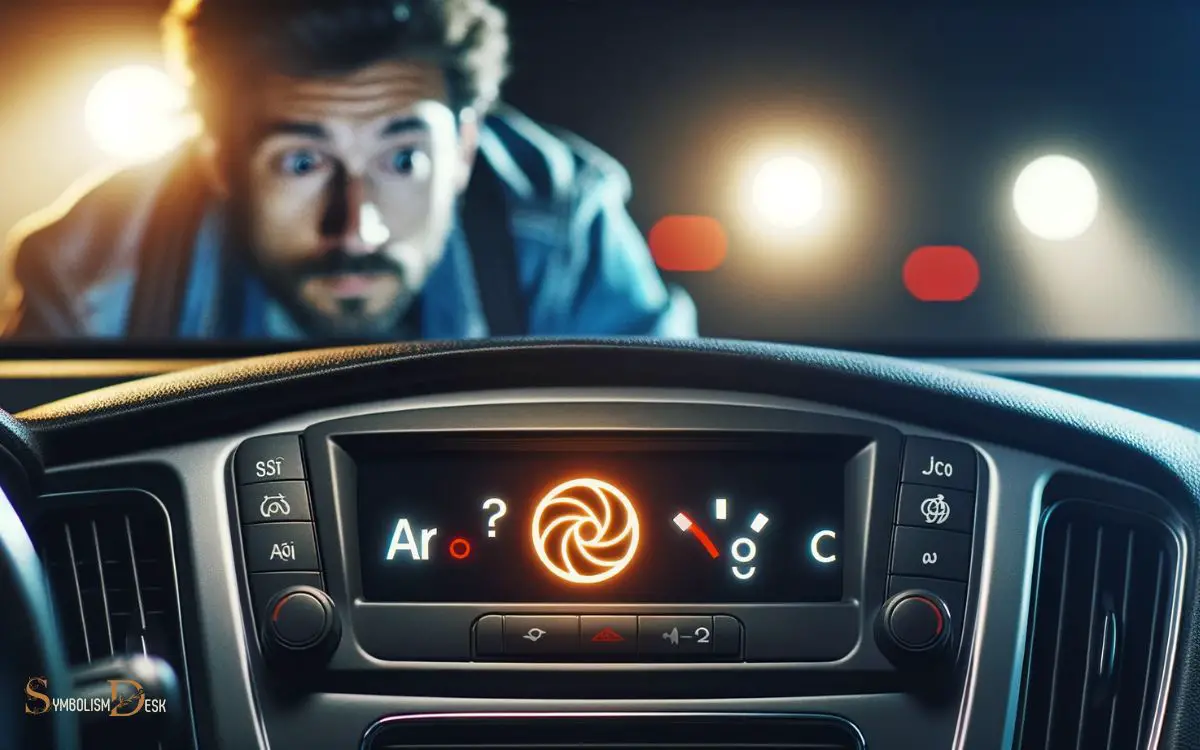
The air conditioner symbol in a car indicates the availability of air conditioning for adjusting the temperature inside the vehicle. It is usually represented by a snowflake or the letters “A/C” on the control panel.
When the symbol is illuminated, it means the air conditioning system is active and can be adjusted to cool the interior of the car. When the air conditioning system is in use, it ensures a comfortable temperature within the cabin, especially on hot days. However, it’s important to understand other dashboard indicators as well, such as the car coolant warning symbol meaning, which alerts you to potential issues with the engine’s cooling system. Staying informed about these symbols can help prevent overheating and keep your vehicle running smoothly.
By pressing the button associated with the symbol or adjusting the temperature controls, the driver and passengers can regulate the climate within the vehicle.
Understanding this symbol is crucial for controlling the comfort level while driving, especially in hot weather.
Once the air conditioner symbol is understood, the next step is deciphering the AC controls to effectively manage the temperature and airflow within the car.
Deciphering the AC Controls
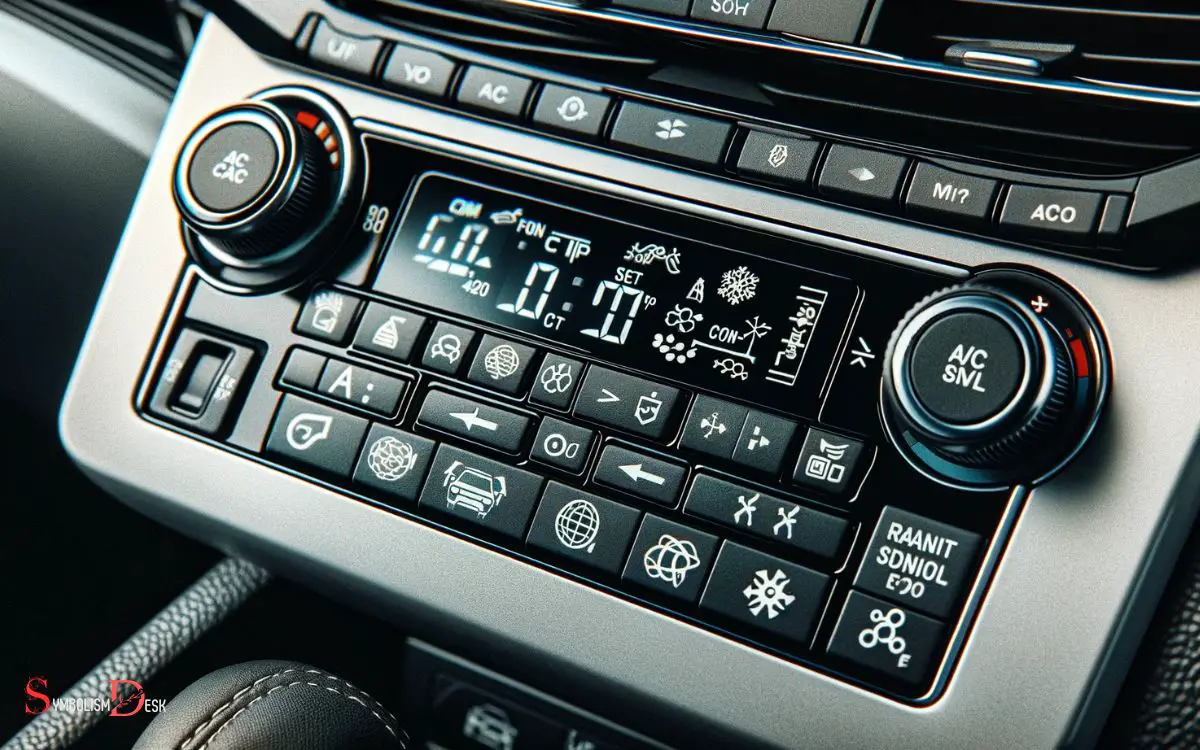
Deciphering the AC controls can be straightforward once you understand the functions of each button and dial. The first step is to identify the temperature control, usually represented by a blue and red dial or buttons.
Turning the dial towards the blue icon activates the air conditioning, while turning it towards the red activates the heater.
Next, locate the fan speed control, which allows the adjustment of airflow intensity. It’s typically denoted by numbers or symbols indicating low to high speed settings.
The mode button or dial determines where the air is directed, such as to the face, feet, or windshield.
Lastly, the AC button activates the air conditioning system, and the recirculation button controls whether the air inside the car is recirculated or fresh from outside. Understanding these basic functions makes using the AC controls much easier.
Dual Zone Climate Control Explained
Dual zone climate control in cars allows the driver and passenger to set their individual temperature preferences, providing a personalized level of comfort.
This feature also enables independent airflow adjustments for each zone, ensuring that everyone in the vehicle can enjoy their preferred air distribution.
With the ability to cater to different climate needs within the same space, dual zone climate control enhances the overall driving experience.
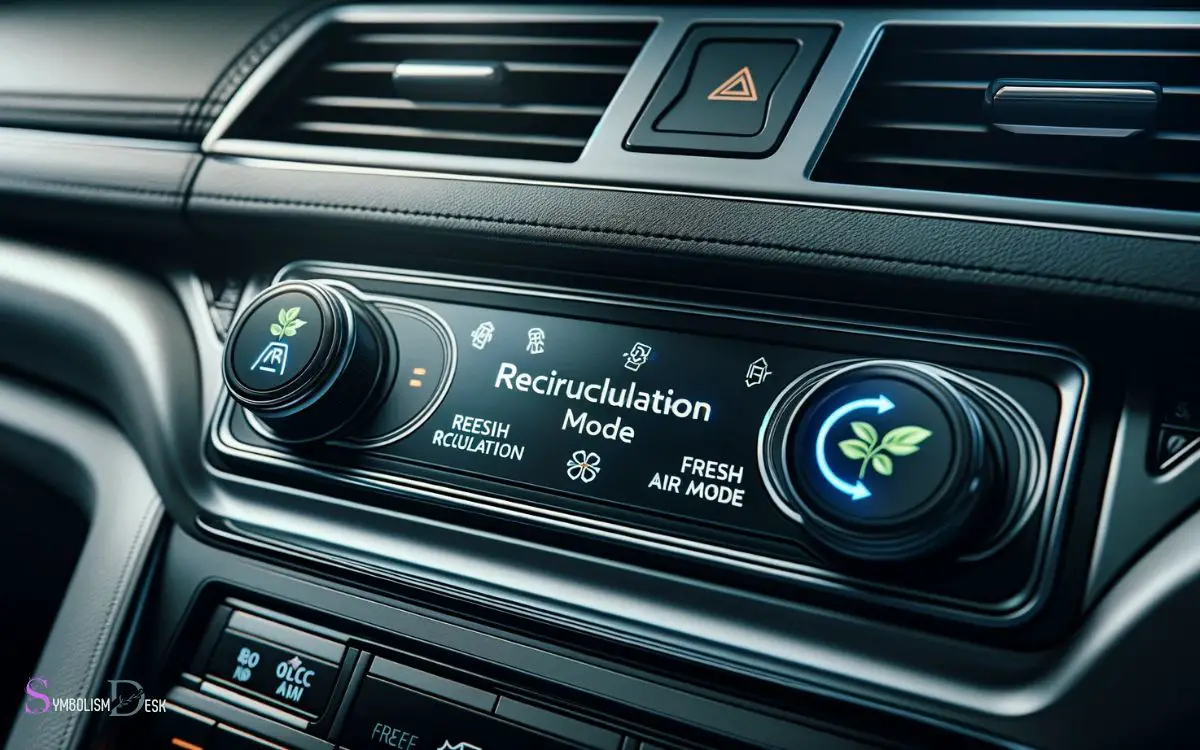
Driver-Passenger Temperature Control
An air conditioner symbol in a car indicates the presence of dual zone climate control, allowing the driver and passenger to independently set their preferred temperatures.
Dual zone climate control enables each occupant to select their desired temperature, enhancing comfort during drives.
This system operates through separate climate controls for the driver and passenger sides, often displayed on the car’s dashboard.
By enabling individual temperature adjustments, dual zone climate control caters to varying heat preferences, ensuring a pleasant driving experience for everyone in the vehicle.
Independent Airflow Adjustments
When using dual zone climate control in a car, occupants can independently adjust the airflow to customize their in-car climate experience.
This means that the driver and the passenger can set different airflow preferences according to their individual comfort levels.
For example, the driver may prefer cooler air directed toward the face, while the passenger may opt for warmer air directed towards the feet.
This independent airflow adjustment feature allows for personalized comfort within the same vehicle, catering to individual temperature preferences.
By understanding and utilizing this functionality, occupants can create a more pleasant and tailored in-car environment, enhancing their overall driving experience.
Dual zone climate control with independent airflow adjustments offers a convenient way to ensure that everyone in the vehicle stays comfortable, regardless of their individual temperature preferences.
Recirculation and Fresh Air Modes
The air conditioner symbol in a car allows the driver to switch between recirculation and fresh air modes for controlling the airflow inside the vehicle. This feature is essential for maintaining a comfortable and healthy environment within the car.
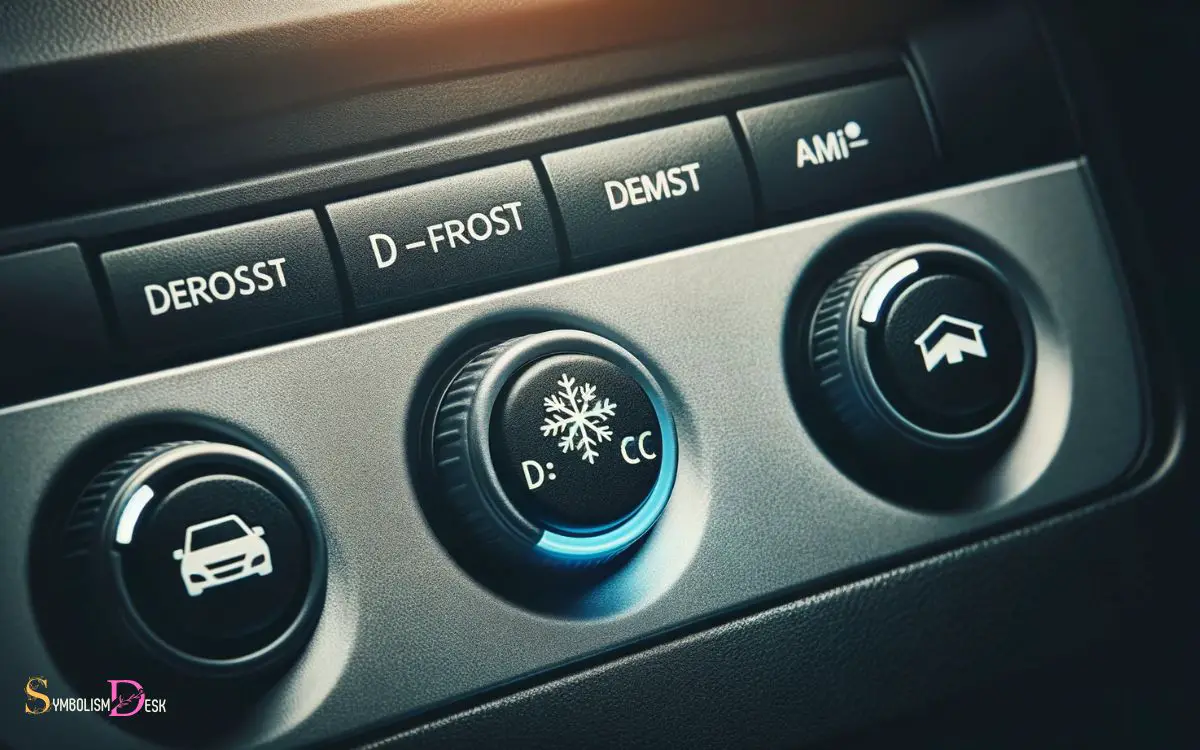
When using the air conditioner symbol, drivers can benefit from the following modes:
- Recirculation mode: This mode recirculates the air inside the car, preventing outside air from entering. It is useful for minimizing exposure to external pollutants and odors.
- Fresh air mode: In this mode, the air conditioner draws in fresh air from outside the vehicle, providing ventilation and a constant flow of fresh air.
- Defogging mode: This mode focuses on directing air to the windshield to quickly remove fog or condensation.
- Automatic mode: This mode automatically adjusts between recirculation and fresh air modes based on the vehicle’s needs.
- Air conditioning mode: This mode activates the air conditioning system to cool and dehumidify the incoming air.
Defrost and Demist Functions
Upon activating the air conditioner symbol in a car, the driver can engage the defrost and demist functions to quickly clear the windshield of fog or ice.
These functions are essential for maintaining visibility and ensuring safe driving conditions, especially in cold or humid weather.
When the defrost mode is activated, the air conditioning system directs air to the windshield, effectively removing any condensation or ice buildup.
Similarly, the demist function works to clear fog from the inside of the windshield, enhancing visibility for the driver.
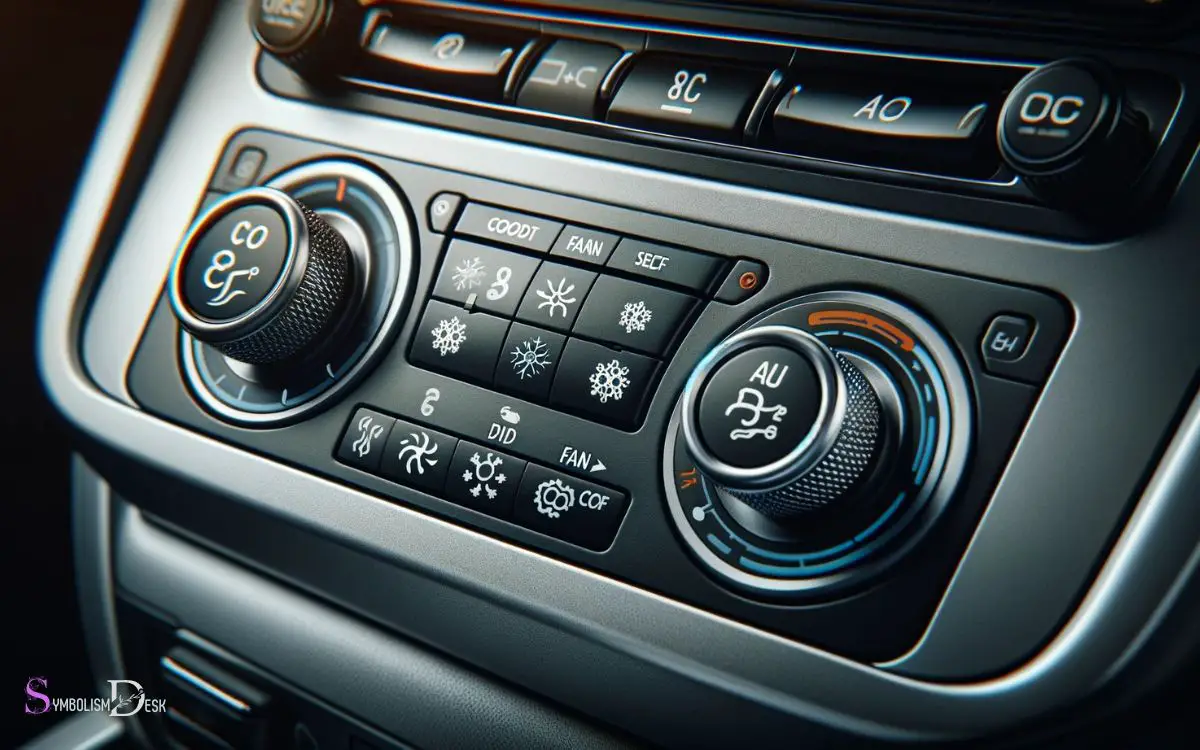
Below is a table summarizing the key features of the defrost and demist functions:
| Function | Purpose |
|---|---|
| Defrost and Demist | Clears windshield of fog or ice, maintains visibility, essential in cold or humid weather, improves driver’s safety. |
Understanding and utilizing these functions can greatly contribute to a driver’s safety and comfort on the road.
Temperature and Fan Speed Adjustments
An air conditioner symbol in a car enables the driver to adjust the temperature and fan speed for personalized comfort and climate control.
The temperature and fan speed adjustments provide a way for the driver and passengers to tailor the car’s interior environment to their liking.
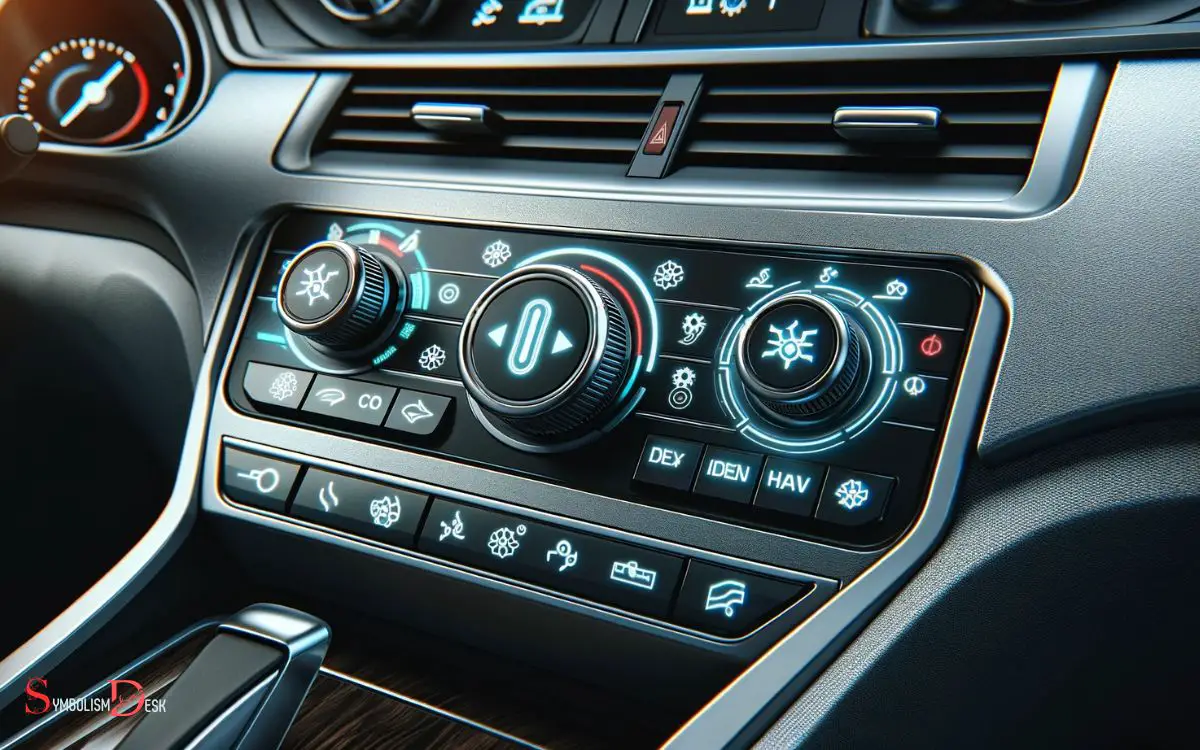
Here are some key points regarding temperature and fan speed adjustments:
- Temperature Control: The air conditioner symbol allows the driver to increase or decrease the temperature inside the car according to their preference.
- Fan Speed Adjustment: It enables the driver to adjust the speed of the fan, controlling the intensity of airflow within the vehicle.
- Dual Zone Climate Control: Some cars offer dual zone climate control, allowing separate temperature settings for the driver and passenger sides.
- Automatic Climate Control: Certain vehicles are equipped with automatic climate control systems, which adjust the temperature and fan speed based on pre-set preferences.
- Defrost and Defog Functions: The air conditioner symbol also enables the activation of defrost and defog functions to clear the windshield and improve visibility.
Understanding these features enhances the overall driving experience.
Air Circulation Symbol in Car
The air circulation symbol in a car typically looks like a curved arrow enclosed in a square or circle. This symbol is often found on the car’s HVAC (Heating, Ventilation, and Air Conditioning) control panel and is used to control the airflow inside the car’s cabin.
It allows you to choose whether the air inside the cabin is recirculated or drawn in from the outside.
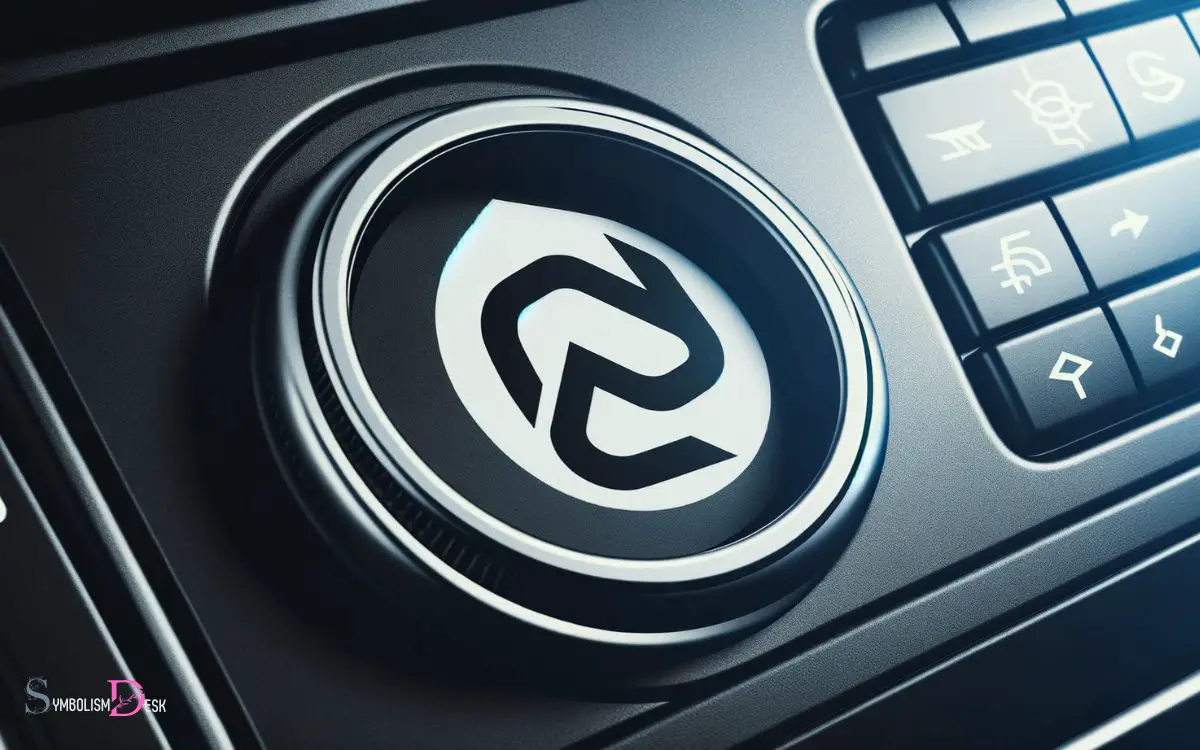
Here’s what the air circulation symbol typically looks like:
Recirculation Mode: In this mode, the symbol usually depicts a curved arrow enclosed in a circle or square with a solid line.
When you select this mode, the car’s HVAC system recirculates the air inside the cabin, which can help maintain the cabin temperature and reduce the intake of external odors and pollutants.
This mode is useful when you want to keep the air inside the car isolated from the outside environment, such as when driving in heavy traffic or polluted areas.
Fresh Air Mode: When you deactivate the recirculation mode, the symbol may change to show the same curved arrow enclosed in a circle or square, but with an open line instead of a solid line.
This means that the car’s HVAC system is drawing in fresh air from the outside. This mode is typically used when you want to bring in fresh outside air into the cabin, which can be beneficial for ventilation or when the outside air quality is good.
The specific design of the symbol may vary slightly depending on the car manufacturer and model, but the basic concept remains the same. It’s essential to understand how to use this control to ensure comfort and air quality inside your car.
Refer to your car’s owner’s manual for precise information on using the air circulation control, as well as other HVAC functions specific to your vehicle.
Conclusion
Understanding the air conditioner symbol in your car can make driving more comfortable. Did you know that 60% of car accidents are caused by driver distraction?
Knowing how to quickly and easily control your AC can help you stay focused on the road and reduce the risk of accidents. So take the time to familiarize yourself with your car’s AC system for a safer and more enjoyable driving experience.






